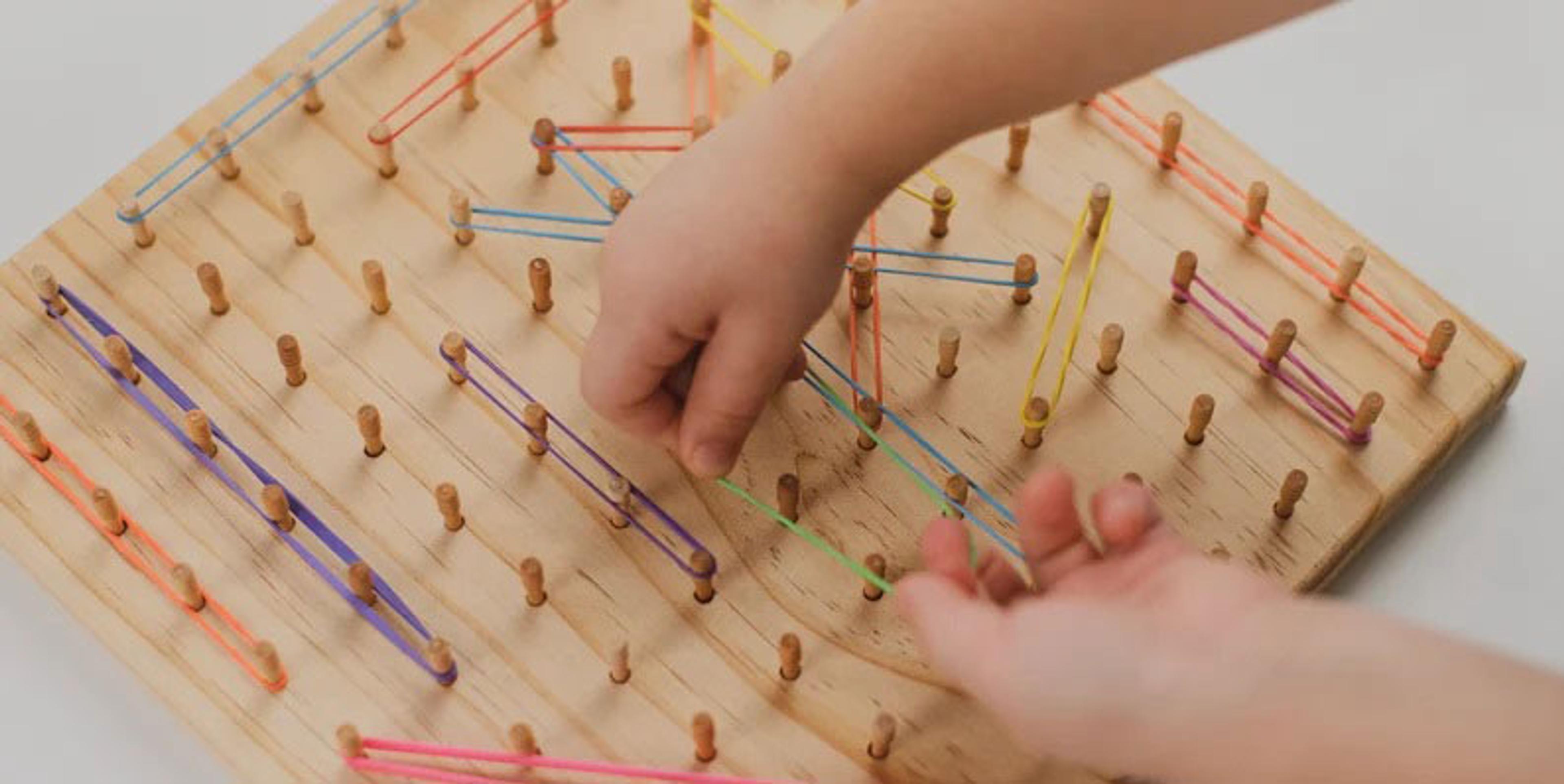The Montessori education philosophy emphasises the importance of developing refined hand movements and hand-eye coordination in young children. To achieve this, one such activity is the use of rubber bands, which has been proven to help children develop their fine motor skills, hand movements, and hand-eye coordination.
What are Refined Hand Movements and Hand-Eye Coordination?
Refined hand movements refer to the ability of a child to use their fingers and hands to perform precise and delicate tasks. Hand-eye coordination is the ability to use the eyes to guide the movements of the hands. Both skills are essential for a child's overall development and are necessary for tasks such as writing, drawing, and using scissors.
How Rubber Bands Help Develop Refined Hand Movements and Hand-Eye Coordination
Rubber bands are a simple but very effective material used in Montessori environments to help children develop their refined hand movements and hand-eye coordination.
There are several ways that rubber bands can be used to achieve this, including:
Sorting and Matching: By sorting rubber bands into different sizes and colours, children develop their ability to recognise and differentiate between different objects. They can also be asked to match the colours of the rubber bands to coloured containers or pegs, which helps to develop hand-eye coordination.
Stretching and Pulling: By stretching and pulling rubber bands, children develop their grip strength and finger dexterity. This helps to develop the fine motor skills required for tasks such as writing and using scissors.
Tying and Untying: Rubber bands can be used to tie knots or create shapes, such as letters or numbers. This helps to develop hand-eye coordination and refined hand movements.
Benefits of Using Rubber Bands in Montessori Environments:
- Developing fine motor skills: Rubber bands require children to use their fingers and hands in a precise manner, which helps to develop their fine motor skills.
- Improving hand-eye coordination: Rubber bands can be used to create shapes and patterns, which requires children to use their eyes to guide the movements of their hands.
- Enhancing concentration: By focusing on the task of sorting or matching rubber bands, children develop their ability to concentrate and maintain their attention for extended periods of time.
Encouraging creativity: Rubber bands can be used to create a wide range of shapes and patterns, which encourages children to be creative and explore their imagination.

How to Use Rubber Bands in Montessori Environments
To use rubber bands in a Montessori environment, follow these steps:
- Provide a range of rubber bands in different sizes and colours.
- Demonstrate different ways of using the rubber bands, such as sorting and matching, stretching and pulling, and tying and untying.
- Allow the child to explore the rubber bands independently, offering guidance and support as needed.
- Encourage the child to use the rubber bands creatively, such as creating patterns or shapes.
You can also try these other presentations:
- Show your child how to stretch rubber bands between stationary pegs, using knobs from the Knobbed Cylinders or clothespins and a bucket. This can help your child work on their hand-eye coordination.
- For a DIY project, create a grid of 16 pegs in a square on a piece of wood. Get bands of different sizes and let your child create patterns and shapes using the bands.
Things to note:
- Make sure to supervise your child during this project to prevent any accidents or misuse of the rubber bands.
- Use caution when shooting the rubber bands to avoid injury.
Rubber bands are a simple yet effective material used in Montessori environments to help children develop their refined hand movements and hand-eye coordination. By using rubber bands in various ways, children can develop their fine motor skills, hand movements, and hand-eye coordination, which are essential for their overall development.

